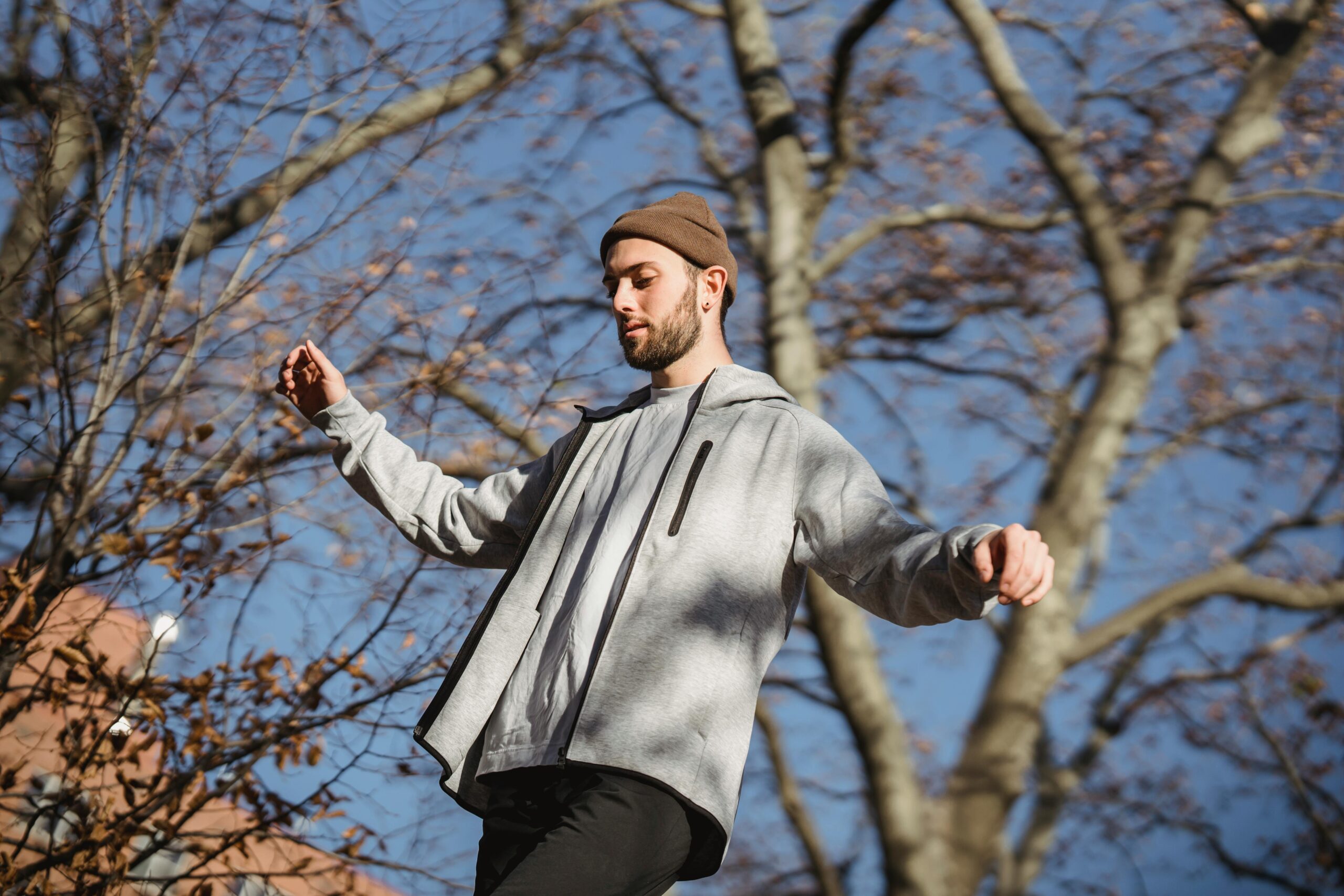Data Indicates That ANY Exercise (Including Dancing) Is Better At Treating Depression Than Just Taking An SSRI.

Living with depression can feel like carrying an invisible weight—heavy, relentless, and isolating. For many, the solution often comes in the form of a prescription, with antidepressants like SSRIs being the most commonly recommended treatment. But recent studies reveal a surprising alternative that doesn’t come from a pill bottle: movement. Exercise, in any form—even something as simple and joyful as dancing—could be more effective at easing the symptoms of depression.
This isn’t just about physical fitness or achieving a healthier body; it’s about reclaiming emotional well-being. Whether it’s a brisk walk, a yoga session, or letting loose to your favorite song in the living room, movement has the potential to restore hope and lift the clouds of despair. What’s more, it’s accessible to everyone—one step, one stretch, or one dance move at a time.
The Research: What the Science Says
For decades, antidepressants like SSRIs (selective serotonin reuptake inhibitors) have been the go-to solution for treating depression. These medications are designed to correct chemical imbalances in the brain, and for many, they’ve offered a lifeline. But new research is challenging this traditional approach, shedding light on a different kind of therapy—one that requires no prescription, no pharmacy visits, and no chemical side effects. A groundbreaking study published in The BMJ reveals that exercise, in all its forms, might not only rival SSRIs in treating depression but could actually be more effective.
The data is compelling. Participants who incorporated regular physical activity into their routines consistently reported greater improvements in their mood, energy levels, and overall mental health than those relying solely on medication. Exercise doesn’t just mask the symptoms of depression—it actively helps to rebuild emotional resilience and enhance a person’s sense of control over their life. This shift from passively taking a pill to actively engaging in a movement routine represents a profound transformation in how we address mental health.
Perhaps the most striking aspect of this discovery is its simplicity and accessibility. Medications can be expensive, carry unwanted side effects, or be difficult to access for those in underserved communities. By contrast, moving your body—whether it’s through a brisk walk, a jog, yoga, or dancing—is universally available. It requires no specialized equipment, no appointments, and offers a natural, empowering way to reconnect with yourself and the world around you.
This is not to diminish the value of SSRIs, which have been life-changing for many people. Depression is a complex condition, and what works for one individual might not work for another. However, this research broadens our understanding of treatment, positioning exercise not as a supplementary option but as a powerful, evidence-based solution that stands on its own. With the evidence clear, the question is: Why does movement hold such transformative power over the mind? The answer lies in the intricate connection between body and brain—a connection that can turn the simplest movement into a catalyst for healing.
Why Exercise Works: The Mind-Body Connection
 Image source: Unsplash
Image source: Unsplash
The human body is designed to move, and when it does, something extraordinary happens. On the surface, exercise might seem like a physical activity, but its effects ripple far deeper—right into the brain. This is where the magic of the mind-body connection comes to life.
When you engage in physical activity, your body releases a cocktail of chemicals, including endorphins, dopamine, and serotonin—sometimes called the “feel-good” hormones. These natural mood boosters help to counteract the negative effects of depression by alleviating feelings of sadness, improving focus, and reducing anxiety. Exercise also lowers levels of cortisol, the body’s primary stress hormone, which is often elevated in those experiencing depression.
Beyond the immediate chemical benefits, exercise creates a positive feedback loop. Setting a goal—whether it’s walking for 10 minutes a day or dancing to your favorite song—and achieving it fosters a sense of accomplishment. This builds self-efficacy, the belief in your ability to succeed, which is often diminished in individuals struggling with depression. Over time, these small victories compound, reshaping how you perceive challenges and setbacks in life.
There’s also a fascinating physiological component. Studies have shown that exercise promotes neurogenesis, the growth of new brain cells, particularly in the hippocampus—a region of the brain that’s crucial for memory and emotional regulation. Depression often leads to shrinkage in this area, but regular movement can help reverse that process, literally reshaping the brain in ways that support emotional resilience and cognitive clarity.
Even more interesting is the way movement engages us emotionally and socially. Activities like group exercise classes, outdoor sports, or dancing connect us with others, combating the isolation that depression so often brings. Physical activity becomes more than just an individual pursuit—it transforms into a shared experience that reinforces bonds and builds community.
The Unique Power of Dance

Among all forms of exercise, dance holds a special place in the fight against depression. It’s not just about moving your body—it’s about engaging your mind, expressing emotions, and connecting with others. Dance uniquely combines the physical benefits of exercise with the psychological uplift of creativity and social bonding, making it a particularly potent antidote to depression.
When you dance, your brain lights up in ways that other forms of exercise can’t replicate. Moving to music activates multiple areas of the brain simultaneously, from those that process rhythm and memory to those responsible for emotion and coordination. This multisensory engagement has been shown to reduce symptoms of anxiety and depression significantly. Furthermore, dancing encourages emotional expression, providing an outlet for feelings that words often can’t articulate.
The social aspect of dance is equally powerful. Whether it’s joining a class, dancing with a partner, or even moving freely in a group setting, dancing fosters connection. Depression often isolates individuals, creating a sense of loneliness that deepens its grip. Dance combats this by creating a shared experience, one where individuals can feel seen, heard, and supported in a nonverbal yet profoundly meaningful way.
Physically, dance improves balance, flexibility, and cardiovascular health, much like other forms of exercise. But what sets it apart is its ability to make movement feel joyful rather than routine. You don’t need to follow strict techniques or routines to benefit—you just need to let the music guide you. Whether it’s an elegant waltz, an energetic hip-hop routine, or simply grooving to your favorite song at home, dance turns exercise into an act of celebration rather than obligation. With its unique ability to engage the body, mind, and spirit, dance becomes more than exercise—it becomes therapy, expression, and connection all in one. And for those seeking relief from the weight of depression, this holistic healing approach can be nothing short of transformative.
Real-World Application: How to Start Moving
 Image source: Unsplash
Image source: Unsplash
The beauty of exercise—and dance in particular—is that it doesn’t require expensive equipment, advanced skills, or hours of dedication to make a difference. It starts with one simple step, and from there, the possibilities are endless. The key is to find movement that resonates with you and fits seamlessly into your life.
Here’s how you can start incorporating movement and dance into your routine:
- Start small and stay consistent: Begin with a 10-minute walk, a light stretch, or a short dance session at home. The focus should be on regularity rather than intensity.
- Choose activities you enjoy: Whether it’s yoga, cycling, swimming, or dancing to your favorite playlist, pick activities that bring you joy. The more enjoyable the activity, the more likely you’ll stick with it.
- Make dance accessible and fun:
- Join a local dance class to connect with others and enjoy a structured experience.
- Follow online tutorials or use dance workout videos at home.
- Turn on your favorite music and freestyle in your living room—no rules, just movement and fun.
- Set realistic expectations: Focus on the process rather than immediate results. Celebrate small milestones, like trying a new activity or completing a short session, and recognize that healing takes time.
- Remove barriers: Wear comfortable clothing, find a supportive space, and eliminate any self-judgment. Movement is about expression, not perfection.
- Combine movement with mindfulness: Pair exercise with deep breathing, gratitude, or meditation to enhance its benefits for your mental well-being.
Remember, it’s not about how much or how well you move—it’s about the act of moving itself. Every step, stretch, or spin you take is a step away from the grip of depression and toward greater emotional and physical well-being.
A Framework for Lasting Mental Health
Exercise, even something as simple as dancing, is a powerful tool in the fight against depression. But let’s be real—healing is never a one-size-fits-all journey. Mental health is a delicate balance, and the best approach is one that blends different practices to nurture both the mind and soul. Movement can be the spark, but true transformation comes when it’s part of a bigger picture.
Seeking professional support is not a sign of weakness; it’s a step toward strength. Whether it’s through therapy, which helps uncover the deeper roots of pain, or medication that stabilizes when life feels overwhelming, these tools have their place. When combined with the empowering effects of physical activity, they create a force for healing that’s greater than the sum of its parts.
Don’t stop there. Layer in mindfulness to connect with the present moment, journaling to capture your victories and struggles, and the magic of human connection—through a group workout, a dance class, or just quality time with people who lift you up. When you bring these pieces together, you’re not just surviving; you’re building a life that thrives. A life full of resilience, joy, and the freedom to embrace your full self.
Featured image source: Pexels
Sources:
-
Noetel, M., Sanders, T., Gallardo-Gómez, D., Taylor, P., Del Pozo Cruz, B., Van Den Hoek, D., Smith, J. J., Mahoney, J., Spathis, J., Moresi, M., Pagano, R., Pagano, L., Vasconcellos, R., Arnott, H., Varley, B., Parker, P., Biddle, S., & Lonsdale, C. (2024). Effect of exercise for depression: systematic review and network meta-analysis of randomised controlled trials. BMJ, e075847. https://doi.org/10.1136/bmj-2023-075847
Loading...






